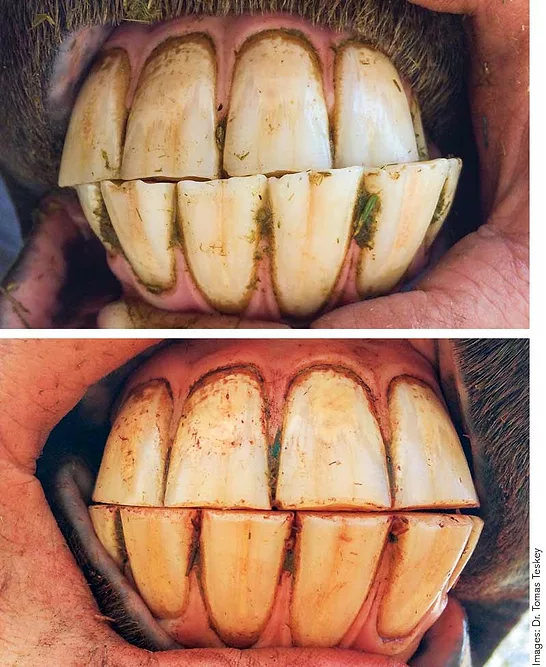American Farriers Journal
American Farriers Journal is the “hands-on” magazine for professional farriers, equine veterinarians and horse care product and service buyers.

Is there a connection between equine tooth alignment and hoof balance? Less than 2 decades ago, discussions surrounding the possibility emerged. Opinions on the topic are mixed.
California-based veterinarian David Ramey sees no relationship between dental problems and hoof wear.
“For most horses that are kept reasonably well, the occasional interventions that are needed don’t make any obvious day-to-day difference,” he says. “In extreme situations, a horse with an infected tooth or a horse with overgrown feet, interventions can make a big difference in movement, ease of eating, etc.”
Tomas Teskey, an Arizona veterinarian and hoof trimmer, believes there is a correlation between the hoof and dental problems and balance. About 10 years ago, Teskey observed a pattern in a horse’s dental and foot balance while working on a set of nine or 10 horses on the same day.
“I was correcting incisor balance in a side-to-side manner that correlated exactly with each horse’s soundness,” he recalls. “Every horse had a dental balance in a certain direction, and their feet and front legs also had a side-to-side difference. That included horses that had one heel higher than the other horses that were slightly lame on one front vs. the other foot. And the horses that had a habit of standing or posturing themselves in a certain way.”
Dr. Ramey and Dr. Teskey share their perspectives about the connection between tooth alignment and hoof balance.
When correlation in horse care emerges, farriers, veterinarians and other care providers want information…